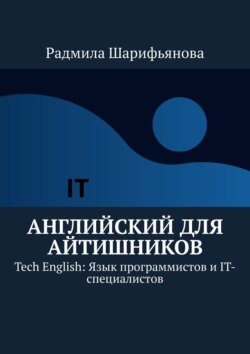Читать книгу Английский для айтишников. Tech English: Язык программистов и IT-специалистов - Радмила Шарифьянова - Страница 11
Understanding RAID Technology
ОглавлениеRAID (Redundant Array of Independent Disks) is a technology used to combine multiple hard drives into a single logical unit. This technology provides data redundancy, increased storage capacity, and improved performance. IT specialists should understand the different RAID levels and their applications to select the appropriate configuration for their specific needs.
RAID 0 combines two or more hard drives into a single volume to increase storage capacity and performance. However, RAID 0 does not provide any data redundancy, meaning that if one drive fails, all data is lost.
RAID 1 provides data redundancy by mirroring data across two hard drives. If one drive fails, the other drive can continue operating without losing any data. However, RAID 1 does not offer any performance improvement.
RAID 5 uses three or more hard drives to provide both data redundancy and increased performance. Data is striped across all drives, and parity information is stored on each drive to ensure data integrity. If one drive fails, data can be reconstructed using the parity information.
RAID 6 is similar to RAID 5 but uses two parity blocks to provide increased data redundancy. This allows the system to recover data even if two drives fail at the same time.
RAID 10 (or RAID 1+0) combines RAID 0 and RAID 1 to provide both data redundancy and increased performance. Data is striped across two or more mirrored sets of hard drives.
In summary, RAID technology is an important tool for IT specialists to increase storage capacity, improve performance, and provide data redundancy. Understanding the different RAID levels and their applications is essential for selecting the right configuration for specific needs.
Vocabulary
RAID (Redundant Array of Independent Disks) – избыточный массив независимых дисков
technology – технология
hard drives – жесткие диски
logical unit – логический блок
data redundancy – избыточность данных
increased storage capacity – увеличенная емкость хранения
improved performance – улучшенная производительность
IT specialists – специалисты по информационным технологиям
RAID levels – уровни RAID
configuration – конфигурация
RAID 0 – RAID 0 уровень
data loss – потеря данных
RAID 1 – RAID 1 уровень
RAID 5 – RAID 5 уровень
data integrity – целостность данных
parity information – информация о четности
drive failure – сбой диска
RAID 6 – RAID 6 уровень
RAID 10 (or RAID 1+0) – RAID 10 (или RAID 1+0) уровень
Tasks
– What is RAID technology, and what are its benefits?
– What is the difference between RAID 0 and RAID 1 in terms of data redundancy?
– How does RAID 5 provide both data redundancy and increased performance?
– What is the main benefit of RAID 6 over RAID 5?
– How does RAID 10 combine RAID 0 and RAID 1 to provide both data redundancy and increased performance?
Sample answers:
– RAID technology is used to combine multiple hard drives into a single logical unit, providing data redundancy, increased storage capacity, and improved performance. Its benefits include improved reliability, faster data access times, and enhanced data protection.
– RAID 0 combines two or more hard drives to increase storage capacity and performance but does not provide any data redundancy. RAID 1 provides data redundancy by mirroring data across two hard drives, meaning that if one drive fails, the other drive can continue operating without losing any data.
– RAID 5 uses three or more hard drives to stripe data across all drives and stores parity information on each drive to ensure data integrity. If one drive fails, data can be reconstructed using the parity information. This provides both data redundancy and increased performance.
– The main benefit of RAID 6 over RAID 5 is increased data redundancy. RAID 6 uses two parity blocks to provide redundancy, allowing the system to recover data even if two drives fail simultaneously.
– RAID 10 combines RAID 0 and RAID 1 to provide both data redundancy and increased performance. Data is striped across two or more mirrored sets of hard drives, providing faster read/write speeds and redundancy in case of a drive failure.
